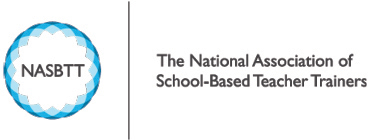Training to Teach with an accredited provider of school based teacher training

Teaching is one of the professions where you are lucky enough to see the impact you have on the next generation. Inspiring young people; seeing young people grow and develop as a result of your guidance is a level of job satisfaction you get with few other jobs.
Routes into teaching
Routes into teaching have been growing and changing over recent years. There are many ways to become a teacher but two of the main graduate routes into teaching are: School Centred Initial Teacher Training (SCITT), offered by accredited providers of school based teacher training, which is a school based route and can attract a salary while you train; and the Postgraduate Certificate in Education (PGCE), which is often described as university based.
Shortlisting and choosing a course and provider that’s right for you is one of the biggest decisions in the journey to becoming a teacher. You will have a lot of questions to answer and sometimes it can feel hard to know what to do or who to contact.
Whichever teacher training course and provider you choose, your training will have similarities. You will spend a large proportion of time in school gaining classroom experience and when you have completed your training you will be awarded Qualified Teacher Status (QTS).
Why train with an accredited provider of school based teacher training?
Training with an accredited provider of school based teacher training offers you a unique opportunity to learn on the job, and be part of the school community from day 1. The vast majority of your training year is spent in schools, working directly with expert colleagues to observe, team teach and build up to solo teaching across the year. You’ll also have the opportunity to fully immerse yourself in school life. If you have previous teaching experience you may also be suitable for employment based routes, which attract a salary.
Accredited providers can also offer you the security of knowing where you will be placed before you train, so that you can plan your journey, and start visiting the school to get to know your colleagues and observe the pupils you will teach.
Here are 4 tips to help you shortlist courses
- Find out what courses are available near you. The Department for Education has a useful online search tool to help you find teacher training courses. The tool allows you to filter by location, provider and phase or subject. You can try out the tool HERE.
- Visit a school and talk to teachers and current trainees. Spending a few days in a school can answer a lot of the questions you may have, and you will get the opportunity to find out about the training options that could be available to you. Accredited providers work very closely with schools and can organise for you to visit local schools and speak with teachers who can tell you what training on the job might be like. You can book some school experience through the Government website https://schoolexperience.education.gov.uk/
- Research individual course providers. Providers are always happy to answer your questions and can give you valuable advice about the application process. You can also visit their websites and attend one of their events to get a feel of the support that you would receive during your training year.
- Financial and logistical considerations. You may be looking to relocate during your training year in which case you will need to find out about accommodation options. Even if you are training close to home it is important to ask your training provider if there could be a lengthy commute to your placement schools, especially if you will be relying on public transport.
Who will support me?
An accredited provider training route means you have a plethora of current teachers who are invested in your training. You will have a school based mentor who will work closely with you during your year, meeting with you, observing you and helping you become the best teacher you can possibly be. You’ll also have a member of the senior leadership team who will have the overview of your training. As well as these two key people, you will also be helped and supported by your department. Your training provider will provide you with additional mentoring support and this will cover a variety of things from your wellbeing to subject knowledge.
What should I do next?
Contact KMT for support during the application process HERE and start doing your research and visit schools. Our website will also help you understand the structure of the programme and provide you with more information.
Follow us on Facebook and LinkedIn for updates.
Based on an article originally published on Kent Teach.



















